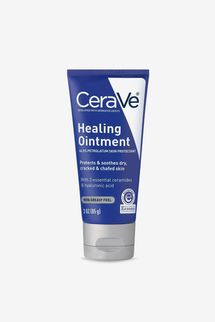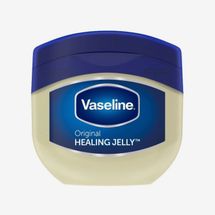
Dear Beauty Editor,
My nails don’t look healthy. There are lots of cracks, misgrowth, discoloration — maybe fungus? How do I cure my nails and prevent it from happening again? Also, what causes this?
—Mona
I know you’re focused on what your nails look like, so this seems to be a beauty concern, but the manicurists I spoke to said that if you were their client, they’d refer you to a dermatologist. Dermatologists are trained to treat hair and nails, not just skin, and it turns out fungus is just one of many possible reasons your nails look the way they do.
“Fifty percent of nail diseases we see in clinical practice are due to fungus and 50 percent are not — so good chance it’s fungus, but equally good chance it’s something else,” says Shari Lipner, MD, an associate professor of clinical dermatology and the director of the nail division at Weill Cornell Medicine in New York City. So, the quick answer is: Make an appointment with a dermatologist. But read on and I’ll share some ways to prevent cracked, discolored nails and walk you through what could be causing your problems.
Let’s start with the least dramatic possibility. Your messed-up nails could be the result of cuticle damage, says Dana Stern, MD, a board-certified dermatologist and founder of the nail-care line Dr. Dana. She says cuticles are like a safety seal that keeps out water, bacteria, and, yes, fungus. “Often in the salon the cuticle is aggressively removed with either a cuticle nipper or a liquid cuticle remover — and both are damaging,” Stern says. “If cuticle compromise persists, the nail can eventually grow in irregularly with white patches, bumps, thickening, discoloration.” Basically, all the issues you described. To prevent that from happening, never cut (or let a manicurist cut) your cuticles. “The best way to care for them is to gently push them back in the shower with a washcloth and apply cuticle oil after your shower,” she says. (Side note: When I learned how unhealthy cuticle cutting was, I didn’t want to stop because my cuticles always looked so thick and rough if they weren’t trimmed. When I finally said no to the nipper, they looked worse for a few weeks, but then they looked much, much better. They grew in slimmer and smoother, and I stopped getting hangnails all the time.)
If your nails are really brittle, that could cause them to crack and grow abnormally — even if fungus isn’t present. The brittleness could be due to age, genetics, repeated exposure to water or chemicals, or other medical issues. “Hypothyroidism — an underactive thyroid — Raynaud’s disease, or a severe protein deficiency can all lead to brittle nails,” says Stern. A doctor will be able to determine the cause based on an examination and, potentially, some blood tests. If there’s no underlying medical issue, then there’s plenty you can do at home to keep your nails supple: Wear gloves when you do any work with water; avoid nail gels or tips that require removal; and stay away from nail products that contain formaldehyde. “Many so-called nail strengtheners still contain formaldehyde or formalin,” says Stern. “These will initially harden the nail, but with time, the nail becomes paradoxically brittle and is at risk for lifting or separating off of the nail bed.”
Lipner also suggests moisturizing your nails and cuticles twice daily with a product such as Vaseline, CeraVe Healing Ointment, or Vanicream Ointment.
If you are dealing with a fungal infection, it’s not going to clear up on its own. Your doctor may confirm there’s fungus present based on an examination, or they might scrape some of the nail and send it to a lab for testing. Then they’ll prescribe an oral or topical treatment (over-the-counter fungus treatments may improve some of your symptoms, but they’re not a cure). “A fungal infection is usually not dangerous, but left untreated it will typically get worse. Nails may be very thick and painful,” says Lipner. “In diabetics, it may lead to secondary bacterial infections and amputations.”
I’m not trying to scare you (and neither is Lipner), but nail changes like the ones you’re describing could also be a symptom of an autoimmune disease. Board-certified dermatologist Lauren Ploch says psoriasis, lichen planus, and alopecia areata can all cause changes to your nails. All the more reason to see a doctor.
And if you have trouble finding a dermatologist, at least make an appointment with your general practitioner. “Dermatologists are nail experts, but primary physicians can diagnose and treat most common nail disorders,” says Ploch.





